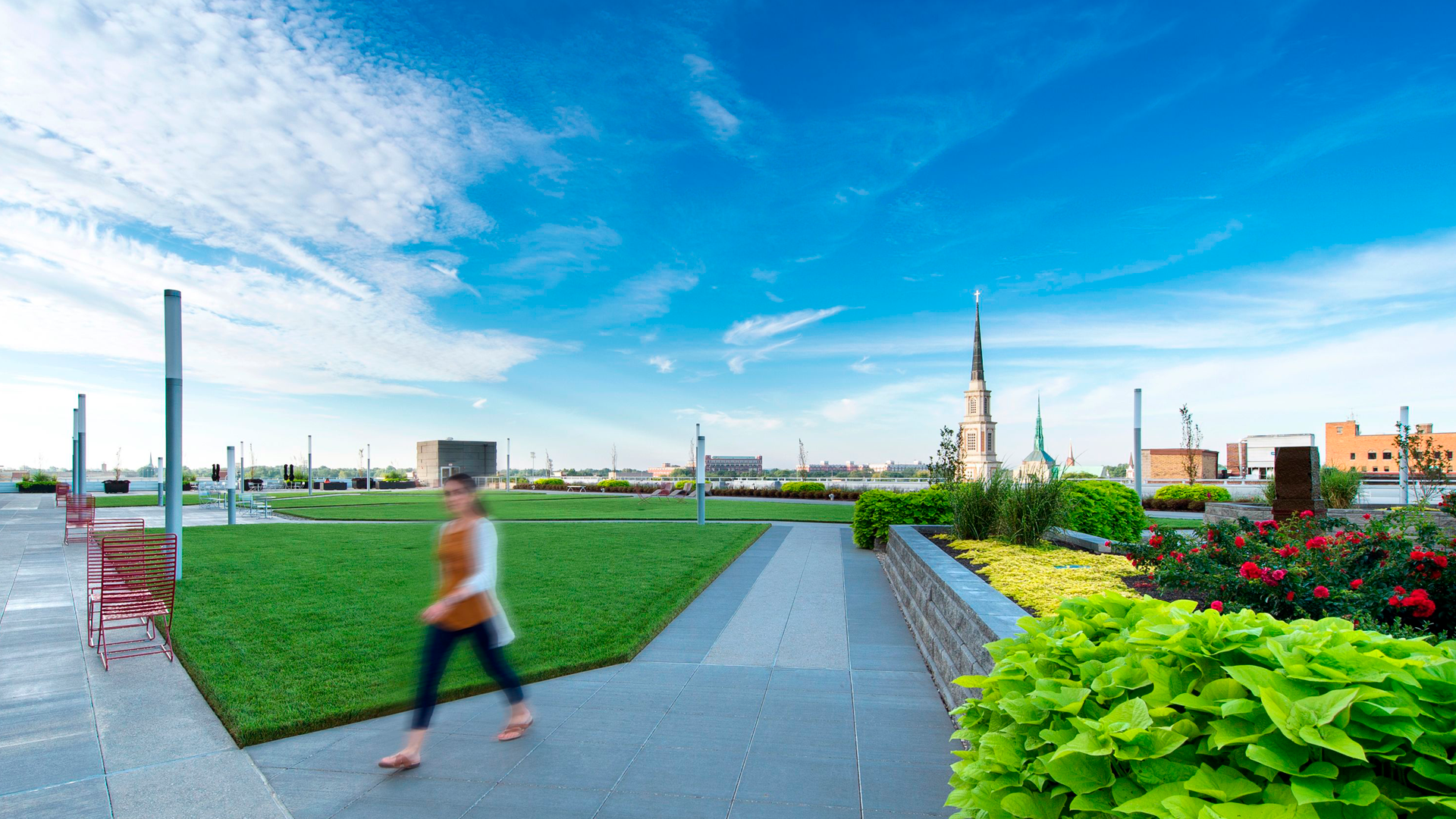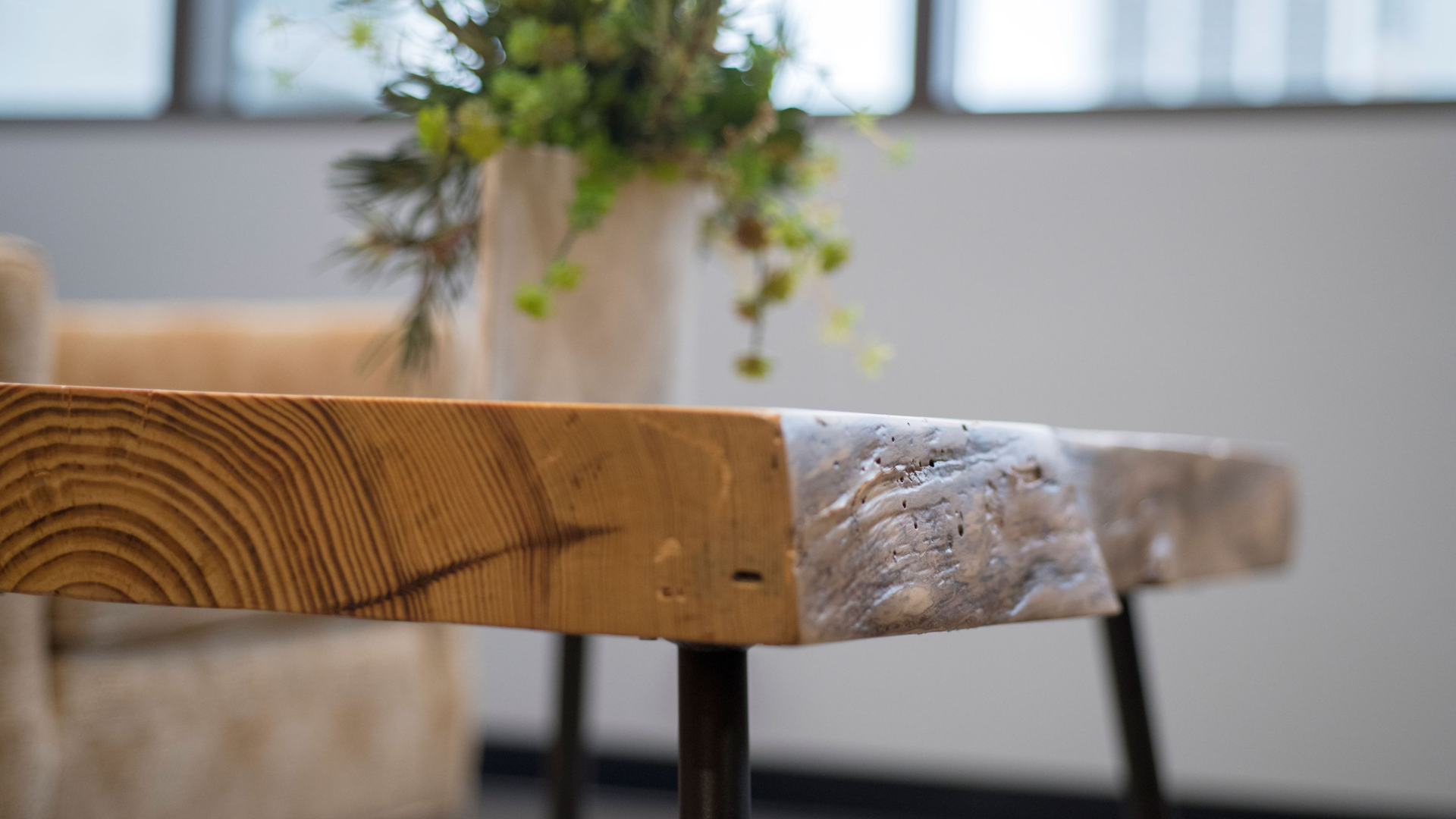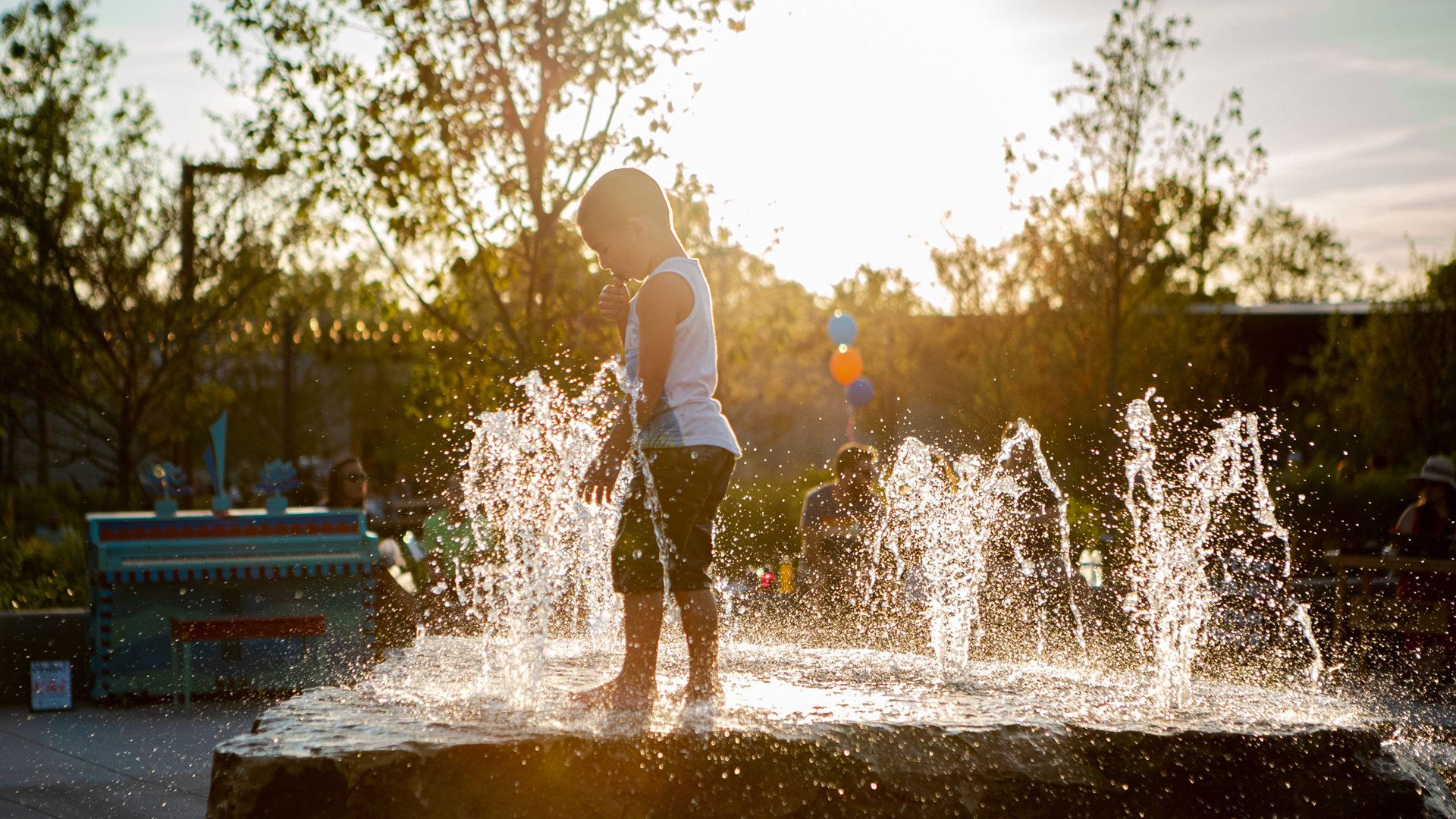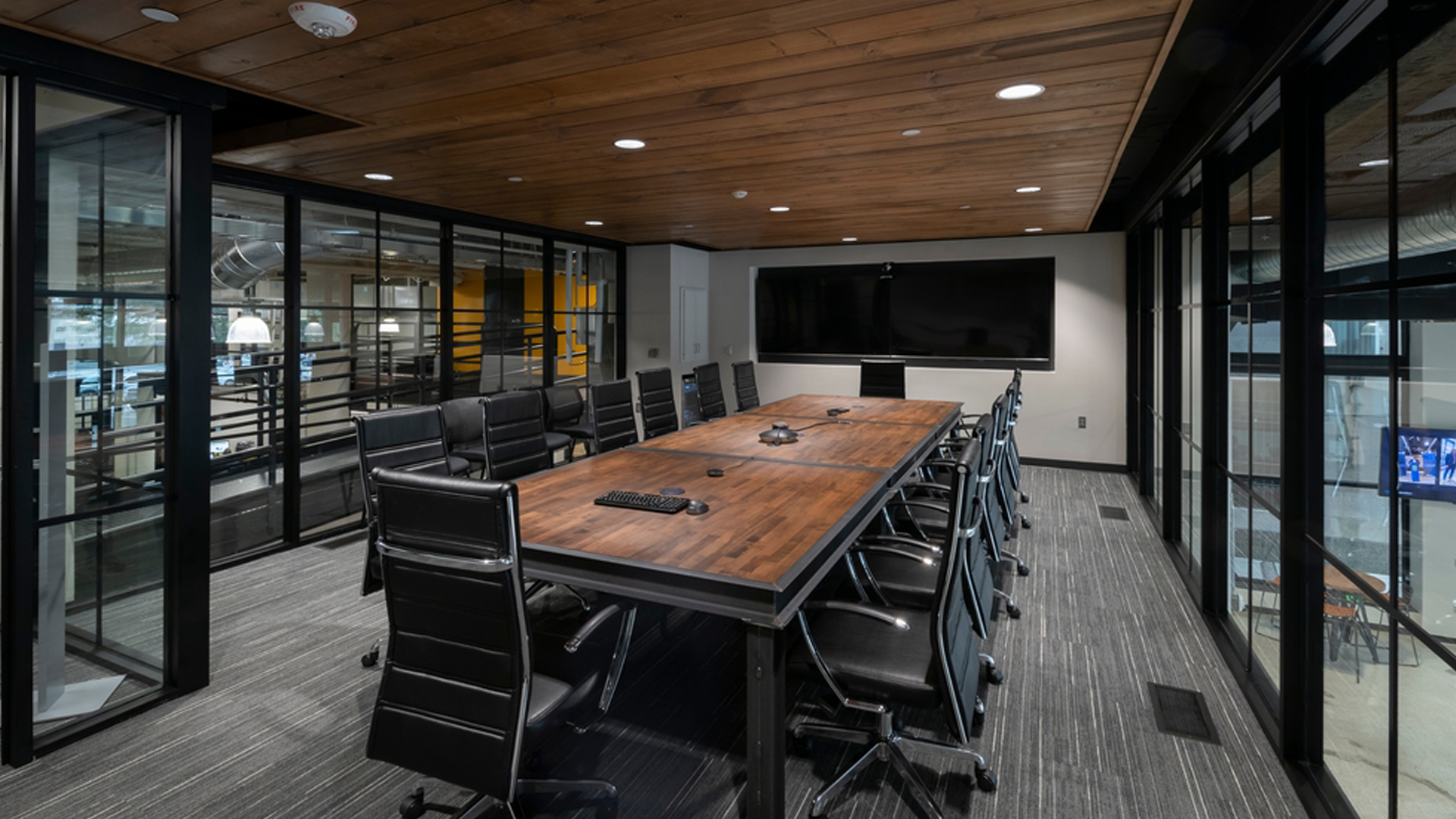Can Nature Change Your Work Environment For The Better?
By Angie Senko, RA, LEED AP BD+C
September 28, 2021Post Tagged in
Amid the pandemic, we are learning how to adjust to the “new normal” and what it takes not only to survive, but thrive once again.Communities are slowly merging into their old routines. People are returning with a heightened awareness of safety and caution, looking for refuge and comfort in a place where much of the day is spent. There is no better time to embrace ideas and strategies that can support people in all the spaces they spend their time. Stepping closer to nature and a natural environment is one significant way to bring about a sense of peace and security in a vastly changing world. While biophilia this is not a new concept, it is not exactly a main-stream topic of discussion either. Biophilia, simply put, is “the humankind’s innate biological connection with nature” (Terrapin Bright Green, 2014). Biophilic design carries the theory one step further in applying the concept to the tangible elements around us, the things that designers can introduce into the built environment for clients to thrive. A park above the streetscape among residential units and businesses, this green space provides an oasis to the occupants of adjacent buildings.
|
 |


